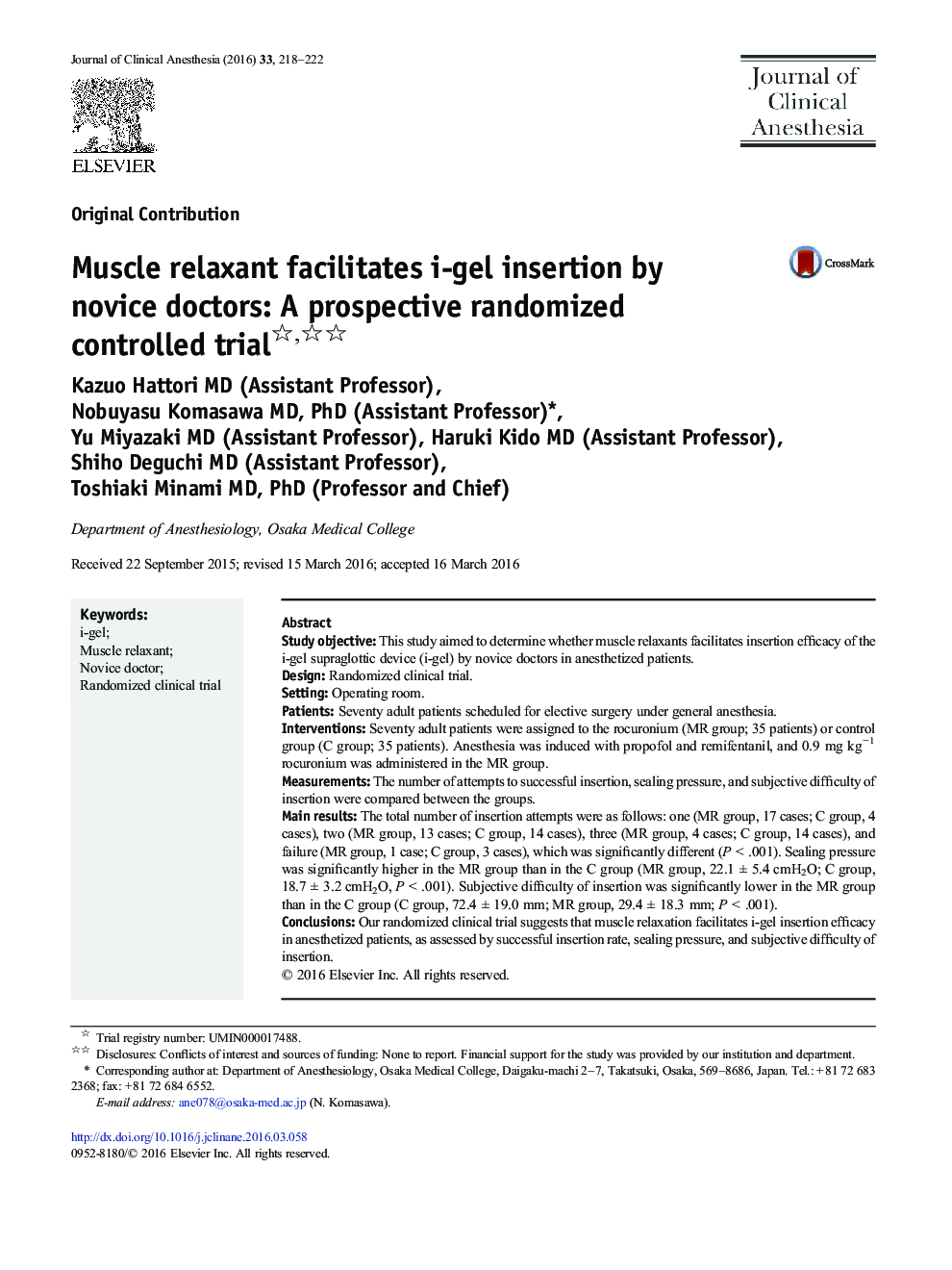| Article ID | Journal | Published Year | Pages | File Type |
|---|---|---|---|---|
| 2762108 | Journal of Clinical Anesthesia | 2016 | 5 Pages |
•Insertion of i-gel (i-gel) by novice doctors can lead to various complications.•We evaluated whether muscle relaxants facilitate i-gel insertion by novice doctors.•Number of insertion attempts was significantly smaller in muscle relaxant group than in control group.•Sealing pressure was significantly higher in the muscle relaxant group than in the control group.•Muscle relaxation facilitates i-gel insertion efficacy by novice doctors.
Study objectiveThis study aimed to determine whether muscle relaxants facilitates insertion efficacy of the i-gel supraglottic device (i-gel) by novice doctors in anesthetized patients.DesignRandomized clinical trial.SettingOperating room.PatientsSeventy adult patients scheduled for elective surgery under general anesthesia.InterventionsSeventy adult patients were assigned to the rocuronium (MR group; 35 patients) or control group (C group; 35 patients). Anesthesia was induced with propofol and remifentanil, and 0.9 mg kg− 1 rocuronium was administered in the MR group.MeasurementsThe number of attempts to successful insertion, sealing pressure, and subjective difficulty of insertion were compared between the groups.Main resultsThe total number of insertion attempts were as follows: one (MR group, 17 cases; C group, 4 cases), two (MR group, 13 cases; C group, 14 cases), three (MR group, 4 cases; C group, 14 cases), and failure (MR group, 1 case; C group, 3 cases), which was significantly different (P < .001). Sealing pressure was significantly higher in the MR group than in the C group (MR group, 22.1 ± 5.4 cmH2O; C group, 18.7 ± 3.2 cmH2O, P < .001). Subjective difficulty of insertion was significantly lower in the MR group than in the C group (C group, 72.4 ± 19.0 mm; MR group, 29.4 ± 18.3 mm; P < .001).ConclusionsOur randomized clinical trial suggests that muscle relaxation facilitates i-gel insertion efficacy in anesthetized patients, as assessed by successful insertion rate, sealing pressure, and subjective difficulty of insertion.
